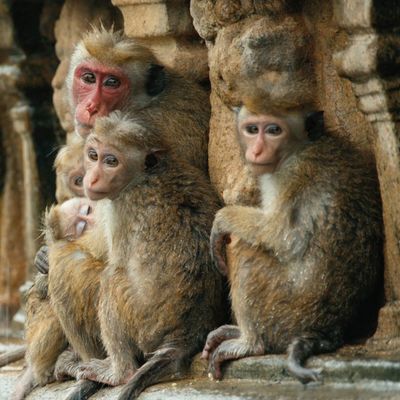
It’s rarely mentioned today, but Walt Disney, alongside innovating the animated feature film, was also among the pioneers of the feature-length nature documentary. 1953’s Oscar-winning The Living Desert is still one of the pinnacles of the genre — with its beautiful photography and sly editing, not to mention its gently anthropomorphized, playful depiction of animal life in the Arizona Desert. But perhaps its most remarkable quality is its easy translation of geography and science: The Living Desert opens with an elegantly animated sequence explaining how the Sierra Nevada Mountains keep moisture from reaching the desert, and there’s a comforting simplicity to it, as if Uncle Walt and his filmmakers had succeeded in turning science into fairy tale. That’s not meant as a slight: Generations of kids back then probably first learned about the wonders of nature from these films unspooling through 16mm projectors in classrooms around the country.
Nature docs have become beyond ubiquitous in the intervening decades, but in recent years, Disney has partnered with the British documentarian Alastair Fothergill (Planet Earth) in a series of similar films. The results (Chimpanzee, African Cats, etc.) have been mixed, but these movies ably carry the Disney mantle of turning the heartlessness of nature into something gentle and easy to grasp. They make the wild familiar.
The latest, the Tina Fey–narrated Monkey Kingdom, announces that intention quite early on with a montage of macaque monkeys running and leaping to the strains of “Hey Hey We’re The Monkees.” The film follows a group of macaques who live in an abandoned temple complex in a dense forest in Sri Lanka. Our heroine is Maya, whose newborn son Kip initially comes to the world fatherless, as her mate Kumar has been banished from the group. There’s a hard hierarchy to this community, with the alpha male Raja and a trio of snooty, aging sisters comfortably ensconced atop the uppermost branches of a giant fig tree, while Maya and her kin are forced to dwell on the bottom, rummaging for scraps, scavenging from rivers, and huddling for warmth at night. Much of the film focuses on the ridiculously adorable Kip learning the seemingly unbreakable rules of this society — from the slaps he gets for not knowing his place, to the death he witnesses when his hungry clique runs afoul of a terrifying monitor lizard while searching for food.
But this is Disney, and there’s got to be more to it than just “Life is nasty, brutish, and then you’re eaten by a giant lizard.” So, Monkey Kingdom eventually also gives us a battle for supremacy with an invading group of monkeys, an exile to the city, the return of Kumar, and some surprising (at least for a nature doc) reversals of the social order. All throughout, the filmmaking is seamless: Directors Fothergill and Mark Linfield and their crew shoot the animals up close and in intimate settings, and even give us shot-reverse-shot editing combinations that suggest a lot of patience, and some canny re-staging, went into putting this film together. (Similarly, when the monkeys head into town, we see them secretly raiding and stealing from unwary shopkeepers — who, one suspects, would at least have noticed the cameras, if not the monkeys.)
Monkey Kingdom will easily engage younger viewers, and the deftness of the filmmaking should ensure that parents will enjoy it, too. Throughout, Tina Fey’s narration underlines the humanity that the producers no doubt want this tale to have. Her delivery is far from the authoritative intonations of a David Attenborough. She’s playful, at times even adopting the different animals’ voices and riffing on what they might be thinking. The off-the-cuff quality of her narration somehow tempers the fact that what we’re seeing is likely a combination between nature doc and fantasy. She also knows to soften her delivery when she’s speaking of the love that Maya has for her son, as we watch these strange creatures embrace. That ground-level humor and warmth Fey brings to the story makes a lovely match with the exactitude of the filmmaking. This may be an unabashed, Disneyfied version of nature. But it’s also fun, touching, and expertly assembled.


